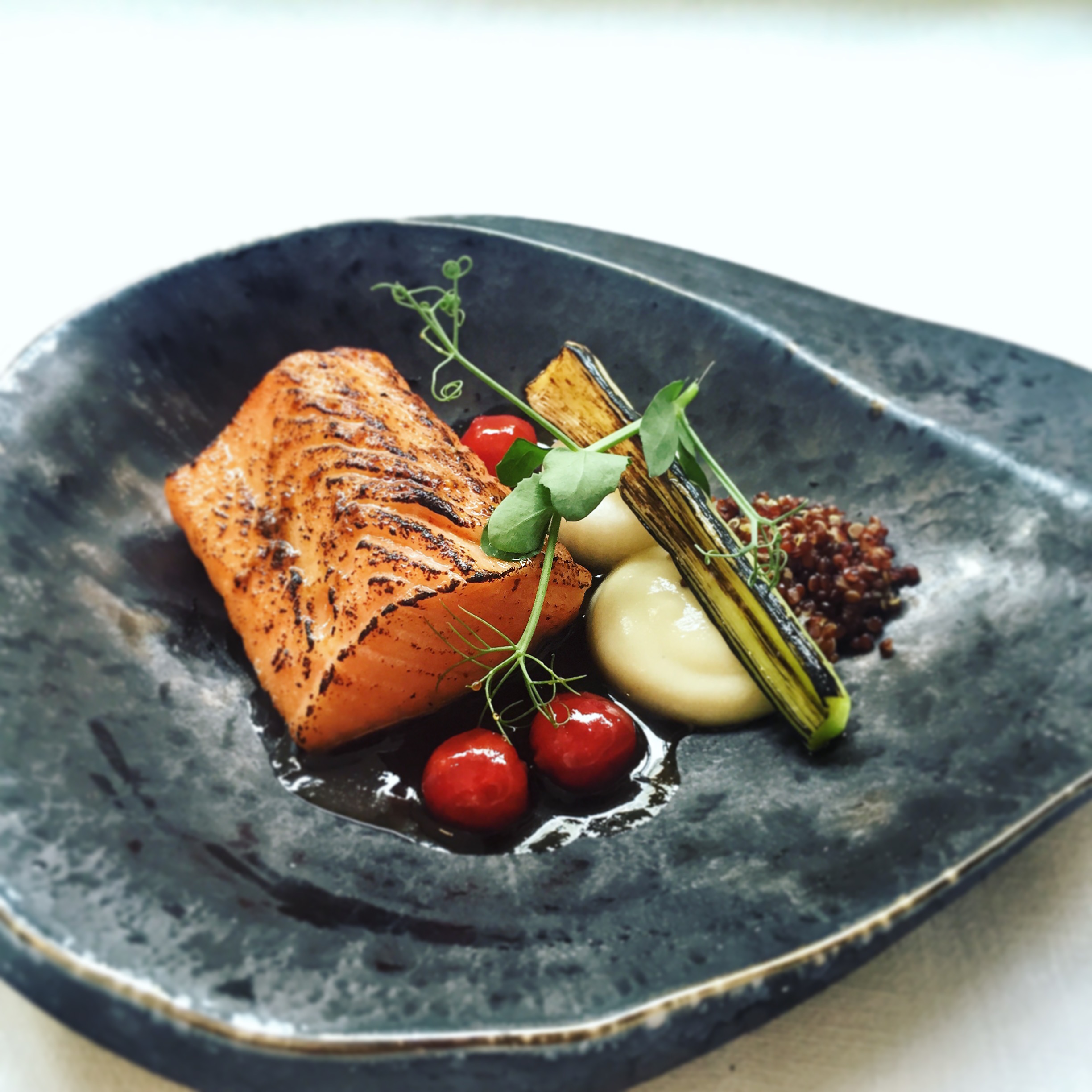For many chefs (myself included), there comes a time when you must know when to stop. I’m not talking about quitting cooking I’m talking about the creation of new dishes and the thinking behind food. There is a level of maturity or confidence allowing some chefs to understand when to stop. To understand that the last little dot of gel or micro herb is completely unnecessary, neither complimenting or adding additional depth to the dish.
I often find myself reaching for more ingredients without knowing why, something is missing, it needs more color or I need to fill that space. It also helps to have an honest voice willing to put the breaks on your creativity when your work selfishly becomes about you and less focused on food.
THINK IT THROUGH
I have found I loose my way when energy in channeled into a singular line of creativity or ingredient. Meaning I was so intent on getting one element perfect that I lost track of the others and fell back on my defaults – a little puree here, a crisp garnish there and something green randomly around.

You want the flavors to be well balanced, without competing? Or is there a single flavor that should ride above the rest? The texture of the braise is silky smooth so aim to compliment or you need crunch to counter the creamy texture? Thinking about where you are going with the entire dish rather than singular elements helps you understand when enough is enough as there is a clear goal to be achieved.
SOCIAL MEDIA
There is so much food imagery on social media these days, especially on all my feeds. It’s also the rise of the social media “food artist”. A food artist is the creator of those ridiculously beautiful & designed plates that pop up all over Instagram. In the past these culinary artists worked in relative secrecy assisting chefs with food magazines or cookbook spreads but now social media has provided a platform of unprecedented reach. Don’t get me wrong I am often inspired by the amazing table layouts and accessories as well as perfectly manicured and photographed food, but also I understand fact from fiction.

EAT IT YOURSELF
Sounds strange right? Surely every chef eats their own food before serving it to the guests? You would be surprised how many don’t, or if they did it’s just 2-3 spoonfuls before passing godlike judgment on the latest creation. This is a massive mistake and how many chefs loose sight of when enough is enough.
Building your palette is similar to developing muscle memory, the more you taste the easier it becomes, but if you stop using these muscles they shrink and disappear. The more you taste and recognize certain flavors or combinations the easier becomes. When you first began cooking others told you when it was right or wrong, later in life you and your guests make this decision together.

There are so many factors in Thailand that make recipes irrelevant and experienced pallets paramount. The heat of the fresh chilies changes during the year, are the limes freshly picked or 3 days in the chiller? Thin or thick slices of green papaya? Tamarind for sweetness or sugar? Is it a new wok or old wok? What type or burner is powering the heat? Which soy or oyster sauce brand is preferred? Homemade chili paste or store bought and of course where in Thailand does the chef come from?

ITS UP TO YOU
Be honest with yourself, encourage negative and positive comments from others, if you think it’s not needed it’s probably not. Keep track of when something was successful and when it wasn’t. Get back to basics and keep building your palette, the greatest form of knowledge is experience.
Try not focusing on single ingredients, keep the whole picture in mind. Food is already beautiful, never sacrifice flavor or temperature for unnecessary “fluff”. Don’t be pressured by popular culture, try using it only for inspiration. Trends are called trends for a reason.
Begin with a goal rather than only ingredients, it’s so easy to get caught up in the moment. Aim to have your vision translated into the guest experience, returning to you as a compliment.
Enough is enough.






